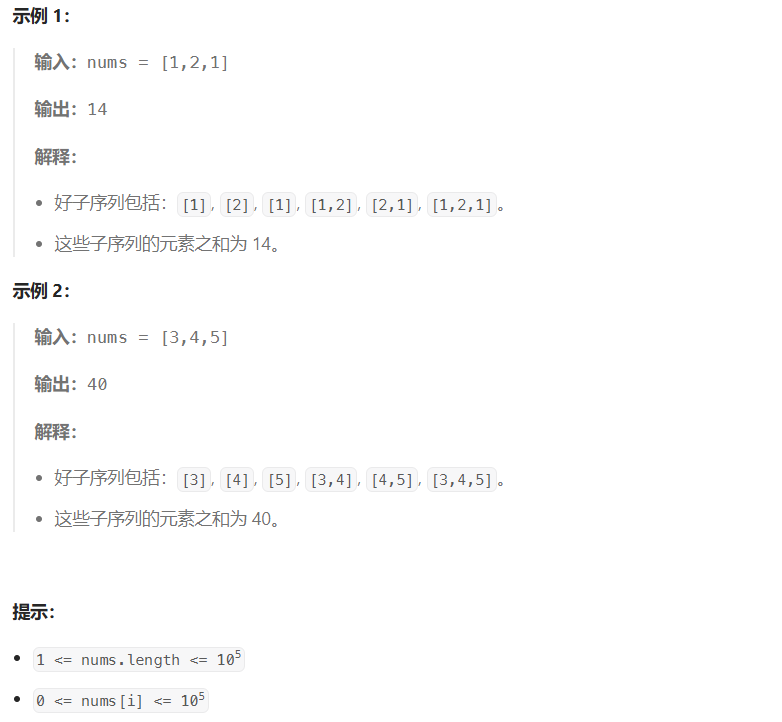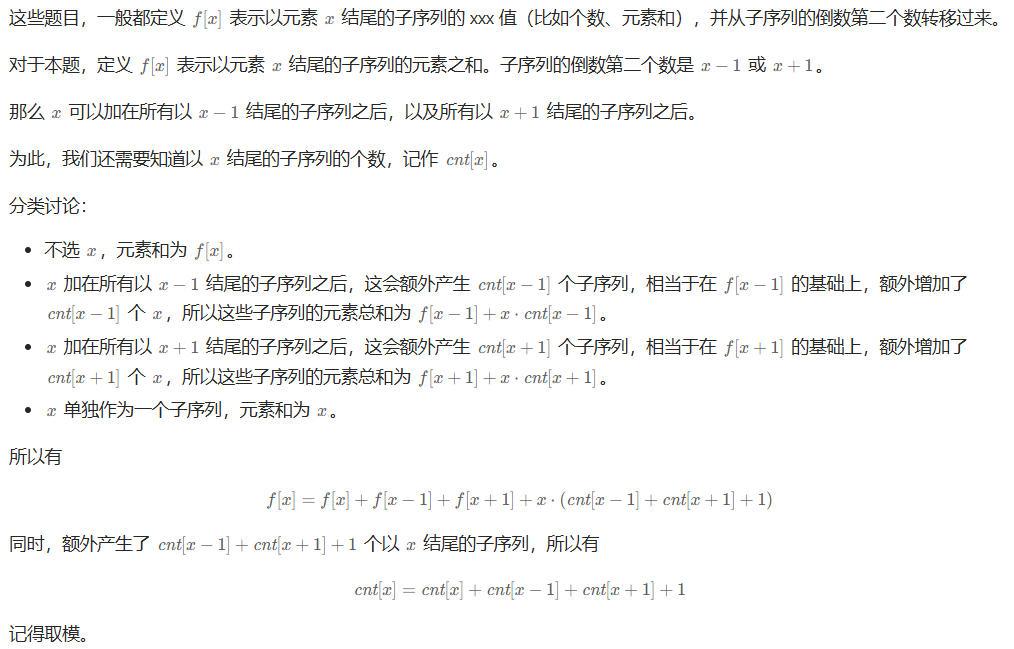一. 题目


二. 思路

三. 代码
using LL=long long;
const int N=1e5+10, BASE=1, MOD=1e9+7, INF=2e9;
class DP
{
public:
int cnt[N], maxv;
LL f[N];
public:
void init(vector<int>& nums)
{
fill(cnt, cnt+N, 0);
fill(f, f+N, 0);
maxv=reduce(nums.begin(), nums.end(), -INF, [](const int &a, const int &b)->int{
return max(a, b);
});
}
int work(vector<int>& nums)
{
init(nums);//初始化
for(auto &x:nums)//从前往后枚举,所以无论+1还是-1都是前面的子序列
{
LL c=cnt[x-1+BASE]+cnt[x+1+BASE]+1;
cnt[x+BASE]=(cnt[x+BASE]+c)%MOD;
f[x+BASE]=(f[x+BASE]+f[x-1+BASE]+f[x+1+BASE]+x*c%MOD)%MOD;
}
//+2是因为最大偏移可能到2
return reduce(f, f+maxv+2, 0, [](const int &a, const int &b)->int{
return (a+b)%MOD;
});
}
}dp;
class Solution {
public:
int sumOfGoodSubsequences(vector<int>& nums) {
return dp.work(nums);
}
};



